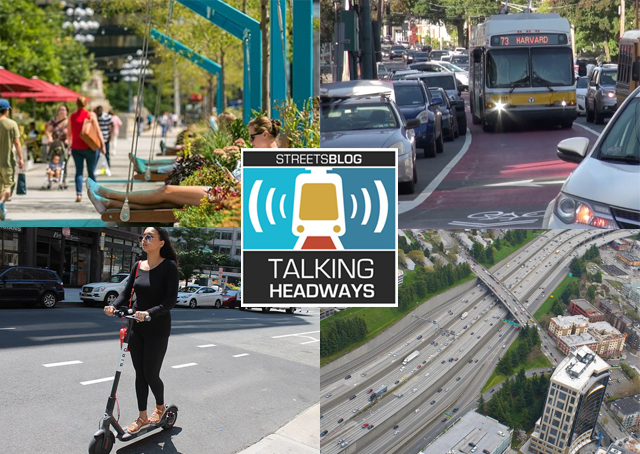This week, Adie Tomer from Brookings talks about how transit-oriented development and active transportation play into climate strategies. We talk about mitigation versus adaptation strategies and what solutions work best for each.
For those of you who get your news through your eyes and not your ears, there’s an edited transcript below the audio player. If you want a full, unedited transcript (with some typos!), click here. If you want to listen, here you go:
Jeff Wood: Well, that’s a good question to back up the topic at hand: Why is TOD such a good climate-change strategy? Why is it a better “product” than the sprawl industrial complex produces?
Adie Tomer: Yeah. I should talk definitions really quick. When I say "TOD," I actually don’t even care if there’s transit there. I really just mean a walkable neighborhood. If you've got a whole bunch of four-over-one apartments, right down one common street, that’s TOD to me, obviously having fixed transit, whether that’s fixed in a bus line [that] has been there for decades, ... rails or BRT in the road or in the right of way. Great. Of course. Right. But, you know, we shouldn’t be so transfixed, especially in the U.S., on the "T" part of it. So I’m talking walkable neighborhoods here. So the first great environmental thing that TOD neighborhoods deliver is a significantly shorter trip.
So, based on a study that we’re actually going to be expanding, to a hundred Metro areas or a hundred plus in the coming months, on a study we did at six Metro areas, we found basically walkable TOD-like neighborhoods. Their average trip mileage is again, for all trips, was 4.4 miles. Now, relative context that may not sound like anything, it’s certainly beyond walking distance. But remember, that’s all those commute trips that are, you know, 10, 15 miles and a lot of places in non-walkable places. The average trip mileage was 9.1 miles in many of those really suburban, automobile, random neighborhoods. That’s a huge difference.
And if we want to hit our transportation-emissions targets, we need to face the facts. That’s really hard for most people in America who don’t live, especially in many coastal or dense beyond heartland markets. They can’t get out of their car. They can’t stop driving, and they need it for even 50, if not a hundred percent, potentially of their key economic activity. So they’re going to have a car. The best thing we can do is make sure they drive short distances and continue to make it attractive to them to use their bike, walk, use transit, more of those trips and shorter distances are going to do that. So, that’s the first benefit as a categorical group.
The second one, though, is that when you build those kinds of neighborhoods, it has these other knock-on benefits beyond transportation. So, as one example, the stormwater runoff and denser development is 74 percent lower than in automobile-oriented development. Building out broadband networks can be four times in savings, right? So that’s just on water and broadband infrastructure.
In general, we see huge efficiencies, and folks like Smart Growth America and a ton of academics have been running these studies for decades now. And we know it’s extremely efficient on infrastructure. In particular, from an environment perspective, it’s part of the reason Europe kind of eats us right now on the place-based or metropolitan-scale side of climate and carbon footprints, right, in particular, because they have more of these neighborhoods and more of the people live in them. We’ve got to figure out how to get folks living in more of those places while still somehow making sure that it reflects American cultural values from housing stock to quality of life and things. I think we know that Americans like these neighborhoods, too, we just don’t have enough.






